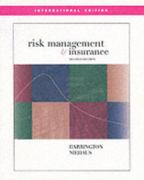Question
1) (Cost functions) a) Consider total cost function: C(q) = 48 + 3q2+ 2q, derive the average cost function, the marginal cost function, and the
1) (Cost functions)
a) Consider total cost function: C(q) = 48 + 3q2+ 2q, derive the average cost function, the marginal cost function, and the minimum efficient scale, and carefully graph the average cost and marginal cost curves.
b) Consider total cost function:C(q) = 20 + 5q, derive the average cost function, the marginal cost function. How does the marginal cost compare to the average cost? Graph these two functions. Does the average cost obtain a minimum at a finite quantity, q?
2) (Elasticity) Consider two demand functions: a) Q(p) = 50 - 10p and b) Q(p) = 2/p.For each demand function, derive the elasticity of demand D, and describe how |D| changes (if it changes) as you move down the demand curve (i.e., as Q increases).
3) (Sunk Cost) A manufacturer has paid an engineering firm $200,000 to design a new plant.It will now cost another $500,000 to build the plant. Let x denote the share of the design cost that is sunk (i.e. 200,000x is sunk). In the meantime, however, the manufacturer has learned of a foreign company that offers to build an equivalent plant for
$600,000.For which values of x should the manufacturer continue with the original plan, and for which values of x should the manufacturer switch to the foreign company's offer?
4) (Economies of Scale) Suppose a firm has chosen its quantity so that its marginal cost is equal to the market price, and is making positive profits because its revenues exceed its costs.Is this firm operating in a range where it production exhibits economies of scale or diseconomies of scale?
5) (Perfect Competition and consumer Surplus) Suppose the demand function for widgets is Q(p) = 60 - p, and all firms that produce widgets have total cost function C(q) = 16 + q3.
a)Suppose that the market is perfectly competitive and there is free entry and exit. All firms that enter use the same technology. A firm that decides to stay out of the market can avoid paying the fixed cost and has a profit of zero.Solve for the long-run competitive equilibrium.What is the long-run equilibrium price? What is the
quantity produced by each firm?How many firms will produce in this market?
b)What is the consumer surplus under the perfectly competitive model? (Hint: If a right-angle triangle has legs of length a and b, then it has area A= ab.)
6) This question asks you to find the socially optimal outcome. Suppose a social planner takes the demand function and cost functions as given, and can choose (i) the market price, (ii) the number of firms, and (iii) the quantity produced by each firm [the planner is free to choose any quantity, even if the firms would lose money].The social planner's goal is to maximize the sum of consumer surplus and firms' profits.To do this, the planner will take into account the two economic principles of efficiency we discussed in class, (i) Allocative efficiency which implies price=mc. (2) Efficiency in production, which means that the cost of production of the total market quantity should be
minimized. Suppose the demand function is Q(p) = 40 - 5p.For each of the following cost functions, what market price, number of firms and quantity for each firm will the social planner choose?
a) C(q) = 20 + 4q. [Hint, find market price first, use demand to find total quantity, what number of firms will produce this quantity at the lowest cost?]
b) C(q) = 3 + q2/3 + 3q. [Hint, the outcome in this market will be the same as in a perfectly competitive model with free entry].
Step by Step Solution
There are 3 Steps involved in it
Step: 1

Get Instant Access to Expert-Tailored Solutions
See step-by-step solutions with expert insights and AI powered tools for academic success
Step: 2

Step: 3

Ace Your Homework with AI
Get the answers you need in no time with our AI-driven, step-by-step assistance
Get Started


